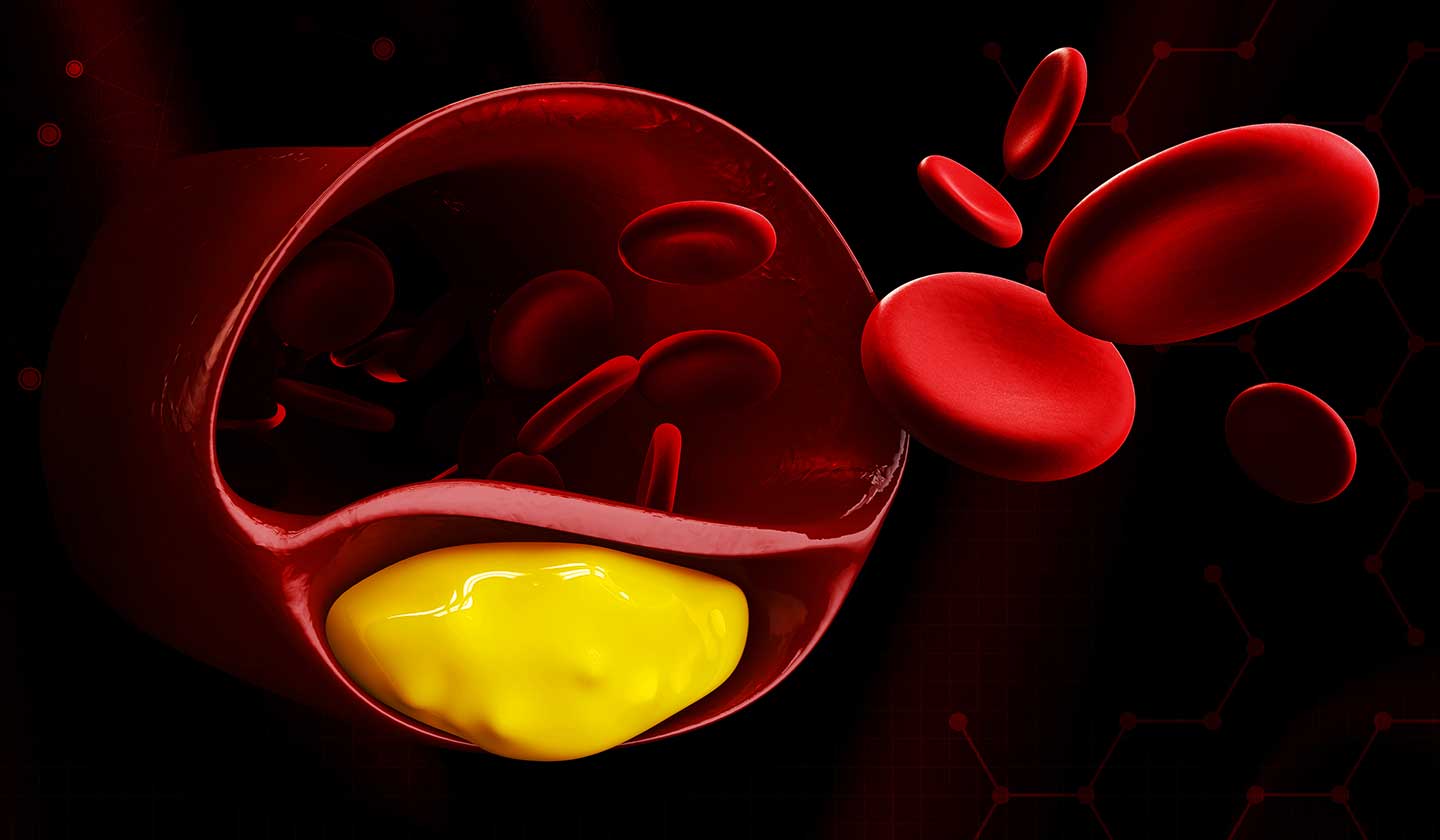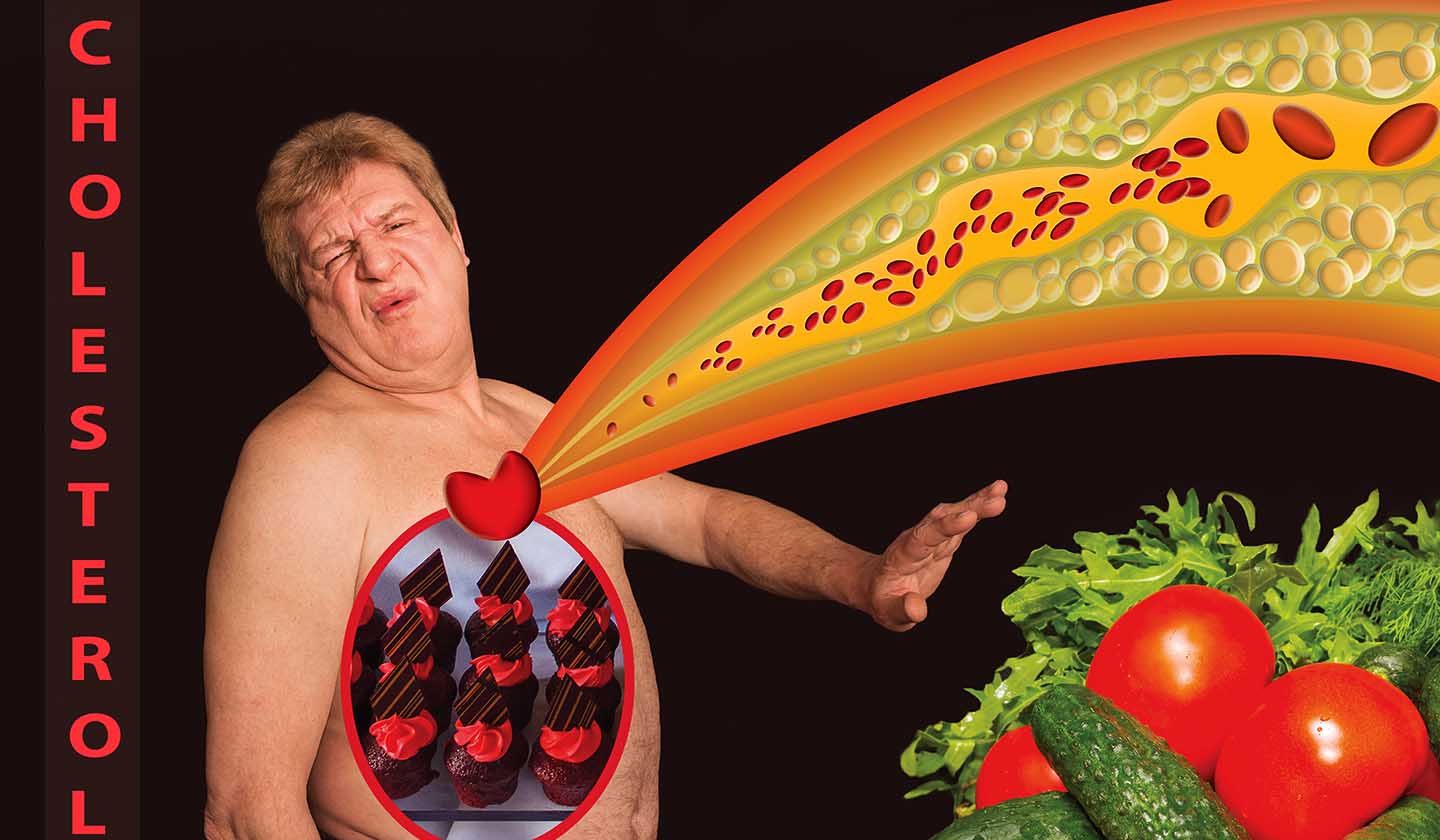Cardiovascular system
Cholesterol, the bad guy

Cholesterol is a fat-like substance found in all the cells of our body which is essential for its proper functioning. It has two origins: a part that is produced within the body itself, mainly in the liver, and another that is ingested through food.
Cholesterol has important functions in the body, integrating the constitution of cell walls and participating in the production of vitamins, hormones, and bile acids.
The amount needed for all of these functions is exceedingly small, and excess cholesterol can accumulate on the artery walls and pose a significant risk of developing several diseases, especially cardiovascular diseases, such as acute myocardial infarction (AMI) or cerebrovascular accident (CVA or stroke).
In the blood, cholesterol is transported by proteins - lipoproteins. There are 2 types of such proteins: LDL and HDL.
LDL cholesterol is commonly referred to as “bad” cholesterol because its level increase in the blood is associated with an increased risk of developing cardiovascular disease.
HDL cholesterol is commonly referred to as “good” cholesterol, because its level increase in the blood is not associated with diseases. HDL picks up excess cholesterol in your blood and takes it back to your liver where it is broken down and removed from your body.
Total cholesterol is the sum of LDL and HDL cholesterol and 1/5 of triglyceride level in the blood.

Recommended values.
- Total cholesterol < 190mg / dl
- LDL cholesterol < 115mg / dl
- HDL cholesterol > 40mg / dl (men) and 45mg / dl (women)
- Triglycerides < 150mg / dl
A person with high cholesterol has no symptoms. This is a silent disease and the only way to know what your cholesterol levels are is through a blood test.
This test can be performed as a quick test at the pharmacy (a finger prick where a drop of blood is drawn), or as a medical laboratory test through a blood analysis.

Causes/risk factors.
The risk factors that can increase blood cholesterol levels are:
- Smoking - tobacco impairs blood flow.
- Sedentary lifestyle - lack of physical activity
- Diabetes
- High blood pressure
- Overweight and obesity
- Age - prevalence increases with age.
- Gender - male population being the most affected.
- Heredity - family predisposition, that is, genetic factors.
- Imbalanced diet - diet rich in saturated fats from fatty meats, crackers and dairy products and excess of trans fats from processed foods.

Prevention/care to be taken:
There are several ways to prevent cholesterol.
- Practice physical exercise regularly
- Balanced diet: rich in fibres (e.g., vegetables), omega-3 (fish, olive oil, avocado, nuts, and flax seeds) and low in saturated fats (e.g., butter, pork)
- Avoid smoking.
- Losing weight in case of overweight or obesity
- Maintain your blood pressure under control.
- If you use medication for cholesterol control, take it continuously and regularly, and try not to forget about it.
- Monitor your cholesterol and sugar (blood glucose) levels through rapid tests performed at your pharmacy.
Your pharmacists can give you some advice on dietary supplements you may take to help you control cholesterol levels. Including:
- Red yeast rice or monacolin K - a mechanism of action similar to Statins that inhibits the production of cholesterol in the liver;
- Omega 3, 6 and 9 - contribute to LDL cholesterol reduction and increase HDL cholesterol.
- Soy lecithin - contributes to increased metabolism and transport of fats, helping to reduce cholesterol.
- Phytosterols - they inhibit cholesterol production in the liver.
In case of medication, remember that to be effective it must be taken regularly and continuously. Therefore, do not forget it or stop taking it.
Sources
iSaúde
Farmácia Distribuição Magazine
Também lhe poderá interessar
Endocrine system






